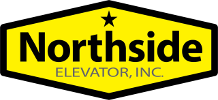The rumen of a cow is a fickle thing. It is ever changing throughout the day and is home to a multitude of microorganisms such as bacteria that produce a variety of end products that can affect your cows. Those positive or negative effects all relate to what does and does not get past the rumen’s protective barrier, the rumen epithelium. The rumen environment is surrounded by a lining, very similar to your skin, called an epithelium. Within the rumen, the cells within the epithelium are arranged in layers, like bricks in a wall. Each layer has a different function that works together to allow the rumen to be highly selective in what products it lets through and what it keeps out. There is a balancing act between what energetic nutrients can cross the barrier while simultaneously blocking harmful substances from getting into the animal. The rumen epithelium is the gatekeeper to the bloodstream and is also one of the largest immune organs in the body besides the skin. Think of it as the door to an exclusive supper club . All the products and the microorganisms within the rumen want to get in to be seated at the restaurant (the blood stream), but only few will be allowed in. The rumen wall (epithelium) acts like the hostess at the club, only permitting certain things through.
This is an important mechanism the rumen has developed because not everything within the rumen is beneficial to the animal. The same microbes that produce helpful energy yielding products to the cow can also produce toxic molecules, or they themselves can be harmful if they get past the rumen epithelium. The rumen wall has been constructed to protect the cow’s body from harmful particles and microbes using a keratinized layer of cells and tight junctions. The keratinized layer of cells acts as a mechanical barrier, and tight junctions are a specialized connection between two adjacent cells (like Velcro) that prevent passage of toxins and microbes from crossing. Like many walls and doors, there can be failure due to mechanical malfunction which allows the harmful products and microbes to escape. Even the Great Wall of China was eventually scaled by the Huns. Therefore, a strong epithelial barrier is important to gut health. A cow with a weak barrier will not be able to reach her full potential for milk production, and will have a greater risk of health consequences like liver abscesses, leaky gut, and decreased immune function.
Healthy barrier function starts with a correctly balanced diet. There is substantial evidence detailing that grain-rich diets and subacute ruminal acidosis (SARA) negatively affect the rumen wall or epithelium . Even mild SARA depletes key protective factors in the rumen epithelium’s cell layers. This leaves the protective lining, and the animal, more exposed to inflammation and cell damage. Other studies have shown that there is an increase in permeability (it becomes leaky) suggesting that there is a failure in the tight junctions, almost like there are holes in the wall allowing ruminal contents to escape. More recently, researchers have shown that SARA also decreases the electrolyte and fermentation acid absorption across the rumen epithelium. Increased permeability and decreased absorption occur simultaneously. This is like a stuck door at the supper club, coupled with poor waitress service. In this case, the rumen wall fails to discriminate between what is good and what is bad. This results in a sick cow.
When the pH returns from an acidotic level (pH < 5.8), the epithelium begins to recover. The initial response of the epithelium is to further increase permeability. This is generated by sloughing the top layer of keratinized cells that are now dead which initially opens the connections between cells more before the cell layers are built up again. Essentially, once SARA has resolved, the epithelium creates a scab and goes through the healing process (remember, the rumen epithelium is similar to your skin). While this is occurring, the absorptive ability of those cells is limited until new cells grow to make a healthy epithelial layer again and secure barrier function. The degree in which the absorptive capacity is affected depends on the severity of the challenge and the duration of the event. Currently, the time it takes for the rumen epithelium to repair is hard to quantify in dairy cows and more research is needed in this area.
Your dairy cows today demand a high energy but also healthy diet. As a nutritionist, we manage the balancing act that must occur between physically effective fiber and rumen degradable starch. We work with dairy farms to target a healthy rumen ecosystem while meeting your cows’ extremely high energy demands. We also must consider your farms forage supply, management techniques, as well as specific cow needs. Every farm is different and a tailored nutrition plan is a necessity. In conclusion, the rumen is a complex organ with an epithelium that must be healthy to act as the gatekeeper between good and bad compounds. The rumen can be challenged by high grain diets, and SARA. Rumen health recovery is not instantaneous and takes time. We can avoid the scab-like health issues by maintaining the balance between physically effective fiber and rumen degradable starch. We have nutrition tools available to balance these and support rumen health. This is a great step to a healthier and more productive cow.
To learn more contact your Northside Dairy Specialist.
